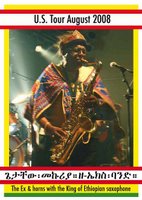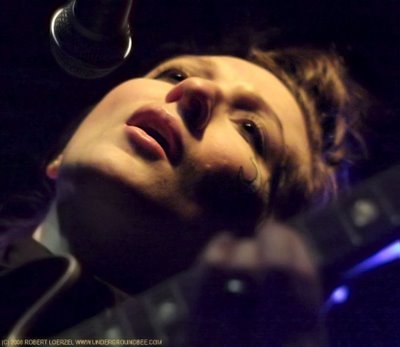 The debut album by My Brightest Diamond, Bring Me the Workhorse, was one of my favorites of 2006, with an almost perfect blend of classical influences with riveting rock guitar and lyrics that trigger memories of childhood. It was a work of genius by Shara Worden, who essentially is My Brightest Diamond, and now she has a worthy follow-up with the more atmospheric album A Thousand Shark’s Teeth.
The debut album by My Brightest Diamond, Bring Me the Workhorse, was one of my favorites of 2006, with an almost perfect blend of classical influences with riveting rock guitar and lyrics that trigger memories of childhood. It was a work of genius by Shara Worden, who essentially is My Brightest Diamond, and now she has a worthy follow-up with the more atmospheric album A Thousand Shark’s Teeth.
My Brightest Diamond performed a terrific set Friday (Nov. 7) at Schubas, with Worden on guitar, backed by a trio of violin, viola and cello, plus occasional bass guitar and samples… with bits of music box and even a puppet show for one song. The chamber music format was an excellent showcase for revealing the sophistication of Worden’s songs, and her quasi-operatic voice sounded lovely in the silent spaces between those floating orchestral notes – and the show still rocked when she let loose on her electric guitar a few times. The string players also played in the opening band, Clare and the Reasons, who did a nice and often amusing set of breezier orchestral pop, with a touch of swing and Broadway music. Here are some photos from the concert.
MY BRIGHTEST DIAMOND INTERVIEW
And here’s an interview I did with Shara Worden of My Brightest Diamond. This is the full transcript of the conversation I had with her back on Sept. 26, 2006, when we were backstage at the Riviera Theatre. She was getting ready to open for Sufjan Stevens. A shorter version of this interview appeared in the January/February 2007 issue of the (now sadly defunct) Punk Planet magazine. The interview is a couple of years old, but I think it’s still interesting and relevant to My Brightest Diamond’s latest music.
Q: You grew up in a musical family. Did your parents influence your music?
A: My dad bought me my first record player when I was 3. So I kind of had control of that in my room. And he would bring home records from the library, like Walt Disney. And later, Michael Jackson’s Thriller. That was the first record that I remember him liking. That and Joan Jett. But I wasn’t really into Joan Jett at the time. It wasn’t poppy enough for me as a little kid.
My parents had music playing all the time, jazz, classical. I won Manhattan Transfer concerts off the radio one time, when I was little. And so we went to a Manhattan Transfer show, which I thought was really cool because the girl had on a fringe skirt, halfway through she ripped the fringe off. I thought that was very scandalous. I was a second-grader.
Q: This was in Michigan?
A: This was actually in Oklahoma. I’ve lived in nine different states. I say that I’m sort of from Michigan, but really it’s not true.
Q: Where else did you live?
A: Arkansas, Florida, Oregon, Louisiana, Oklahoma, Michigan, Iowa, Michigan, Texas, New York.
Q: And your grandfather was an evangelist?
A: Yeah. He and my grandmother would travel around the country in an Airstream trailer. They did for probably 50 years. And he would sing, and she would sing harmony and they made a couple of records in Nashville.
Q: Under what name?
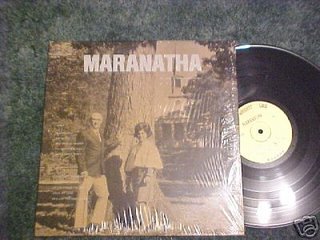 A: Kenneth and Theda Wright. Actually, my dad played accordion and both my uncles played trombone and trumpet. My uncle Barry plays on my record and my dad plays on my record, too. [Note: Pictured is a Kenneth and Theda Wright LP I saw on eBay.]
A: Kenneth and Theda Wright. Actually, my dad played accordion and both my uncles played trombone and trumpet. My uncle Barry plays on my record and my dad plays on my record, too. [Note: Pictured is a Kenneth and Theda Wright LP I saw on eBay.]
Q: Some kids rebel against the music of their parents. Were you not like that?
A: No, because my parents weren’t restrictive about what I listened to — at all. It was sort of like everything was acceptable. They listened to so much different stuff. I went through other rebellions against them.
Q: Like what?
A: Oh, gosh, they were really, really strict, so I couldn’t go to R movies or go to the park with my friends after school. So I turned into a lying, deceitful little teenager. It was pretty bad. But it wasn’t like I was doing anything — I wasn’t out partying until 2 a.m. I actually got kicked out of my house. My senior year, my parents had moved to Texas and I had moved back to Michigan, and I was working on a project to raise money for the homeless. And we were putting on a fashion show for prom. And I would be working on this project with this girl until 2 in the morning, and I wouldn’t call the people I was staying with. And finally, they were like, “We can’t be responsible for you.” So I came home and all my stuff was on the sidewalk. But the irony was I getting kicked out for raising charity money.
Q: When did you start performing music yourself?
A: In high school, I was doing chamber music. We did competitions in Europe, so I was constantly doing music. I started playing piano when I was around 8 or so. My uncle taught me piano. It was definitely all in the family. I’ve been performing since I was a kid. Growing up in the family that we had, there was always performance, whether it was a family gathering or community gathering or a church thing. There was always something.
Q: What sort of music were you performing?
A: I started writing my own tunes in high school. I did musical theater in high school. I sang Feivel as a middle schooler.And then your basically awful Sandi Patty songs, which were atrocious and which I’d be mortified if anyone ever heard.
Q: And those early songs you wrote, would someone listening now to My Brightest Diamond recognize them as you?
A: Not at all. (Sings with heavy vibrato.) “Keep the flame burning and soon it will be a fire spreading through our hearts, you are my desire.” Yeah, awful. Pop ballads. Romantic torture.
Q: So what happened? How did you go from that to the music you’re doing now.
A: Oh, life, man. It’s a very long trajectory. I wasn’t one of those people that found my voice instantly, you know? It’s been something that I’ve worked and worked and worked to define my voice. Part of that is that I’m interested in so many kinds of music that it’s been really difficult for me to focus in on something. So I think that’s one of the reasons why it’s taken me for so long to find my own voice. How did I end up there? I don’t know. I go through periods where I write a lot of tunes and get to a certain point and then decide, “This isn’t where I want to be.” And then I go study string arranging for a year and a half. That’s sort of a pattern for me — working something through and then saying what are the problems with it? OK, let me attack it from a different angle. Or study something else that I’m not going be able to resolve musically without aggressively working on it.
Q: What sort of musical training do you have?
A: I have a degree in classical vocal performance from the University of North Texas.
Q: Did you plan to become a professional opera singer?
A: Yeah, I sort of was, I’ve always thought that would be part of my life. And I still study classical music, privately. Whenever I’m hope in New York, I have a lesson every week. And MBD did a recital in February that was Purcell, Debussey songs, Kurt Weill songs, kind of a look at the history of songwriting beginning 250 years ago and then ending with some MBD string-quartet stuff. So that’s really interesting to me, still.
Q: Did you stray a little bit from classical music because of it being a difficult field to break into or because of interesting in other kinds of music?
A: I think that’s more what it is. I love classical music. I feel like I have a voice in classical music, and I feel like I have something to say, and I feel like it’s a lot of myself, but, yeah, it’s been one of those decisions that I’m looking back on trying to understand why did I make that choice. It’s that I have the need to make something. The immediacy for me of songwriting, the gratification, the expression of it, is why I think I couldn’t stop doing that and why in the end, I didn’t pursue an operatic life.
Q: In addition to studying voice, you’ve studied many aspects of classical music?
A: I studied privately with Padma Newsome. He is a viola player for the Clogs. He’s amazing. At the time, I had just come off a tour with this other guitar player, and I was sick of guitar. So I said, I have to find a person to help me with strings. I was writing music for a couple of plays, so I had an immediate need to get some chops together. Pamda was at Yale, and a one of my best friends at school was studying voice at Yale and had sung one of Padma’s pieces. So I listened to him and wrote to him, and that’s how it all happened. I’d go up there every week or so.
Q: What did you learn from him?
A: He challenges form. “Why are you repeating that?” Or, “What about that is interesting?” He just pushed me in a lot of different ways to find a less obvious approach to something or a more creative approach. There’s things like voice leading, and kind of guiding me in how to talk to players. It’s hard to distill. He fried my mind, that’s the real answer. He exploded my mind.
Q: How do you define the differences between classical and pop music?
A: For me, the defining aspects from a vocal perspective deal with a certain difficulty level. The range in a classical piece, you’re not going to use that range — and you’re not going to use full tones. Pop is higher laryngeal position, it’s more speaking, it’s more forward. So if you try to — but then, you’ve got people like Diamanda Galas, who’s doing legit classical vocal stylings. Or Scott Walker, who I think is really, really operatic. I think he’s the future of opera, myself. I go back and forth. I do know there’s a great difference from when I sing a Debussey song to when I sing a Edith Piaf tunes or one of my own songs.
Q: Have you always kept your pop music and classical music separate?
A: They’ve always been very separate until this album. I had a band before this called Awry, and there were a couple of strings on that. But I would say that for me, it’s a very recent thing for me to try to reconcile these different aspects of my interests.
Q: Did you start My Brightest Diamond with the idea of merging your classical and pop music?
A: Yeah, absolutely. It was to find out what is the potential relationship between strings and drums, because they are natural enemies. The way that I resolved that was by making two records at the same time. In Bring Me the Workhorse, the drums win, and the strings, instead of being fundamental to the writing, the guitar still remains the fundamental piece. In the next record, I’m really am trying to obscure that relationship so that the strings have a more primary function. Because in a way, I couldn’t resolve that musical problem. Because drums are just loud. [Note: She’s talking here about the record that came out this year under the title A Thousand Shark’s Teeth.]
But then you listen to a Peter Gabriel record. And he’s waging that same field by using hand claps or a beat boxer or having these really big tribal drums. But the strings are still a primary role. But — the difference is he’s using an orchestra, and I was using a string quartet. That’s the other thing I ran up against. Björk, for Homogenic, it was beats and strings. And she used an octet. There’s a really big difference between eight people and four. I’m looking at how people solved these problems. That live Portishead record, there were probably 16 string players.
Q: So you need more?
A: Yeah. (Laughs.) I multitrack, man. The power of ProTools. I’m like, “Play it again, guys. That was good.”
Q: What music did you hear that changed your direction from those romantic ballads you wrote in high school?
A: Jeff Buckley, for sure, was probably the biggest transition. Hearing him was a really, really big turning point. I was living five years in Michigan, so I was hearing Motown, R&B, Stevie Wonder, Prince, all that kind of old-school Motown. Even LL Cool J, hip-hop. Then hearing Jeff, who was doing both Benjamin Britten, Nina Simone, and Leonard Cohen with his crazy, amazing voice, burning together all these elements. I had no concept of that before. So he’s a huge influence on me.
Q: Who were some of your other influences?
A: Nina Simone. Prince, for sure. PJ Harvey. All those people. Radiohead — how could we forget? The gods.
Q: How was the music of your first band, Awry, different from My Brightest Diamond?
A: We were trying to be more avant-garde. There’s more dissonance. My singing style is really different. It was full-on all the time… The whole tone is there all the time. It sounds more like an opera person who’s starting to do pop music. As much as I say I’m trying to merge them, I really don’t want to sound that way.
Q: So what did you have to change?
A: To use a singer’s term, it’s called singing off the voice, where you’re not using the full tones. It’s more speaking-oriented than the tone suspending the sound as much. I’m trying really aggressively to work on different emotional colors, so there’s both screaming and whispering, wailing and moaning, and laughing — all of that in the voice, so it’s more expressive.
Q: You have a lot of lyrics about bugs and animals in peril. Are those true stories from your childhood?
A: (Laughs.) Actually, they are. A lot of them are true. “The Robin” is true. “The Magic Rabbit” — my grandfather was a farmer. I don’t want to get too graphic about what they’re about, but I really like the idea of people being able to interpret them for themselves. But, yeah, a lot of them are — the dragonfly story is true. I’m taking them and interpolating what an incident meant. That’s the job of a poet, of a storyteller, of a songwriter. An event happens and then you define the meaning of it, or we expand it.
Q: So what’s with all of the bugs and animals?
A: I don’t know!
Q: Was it a theme?
A: It wasn’t. It’s very strange. I kind of wonder, if it’s easier — it’s like Justin Timberlake’s first record was all “Cry me a river.” Everything is ocean and clouds. I sort of think, perhaps it’s easier for me to identify emotions with animals. It’s almost like making them abstract, or creating a picture and being in some ways more general and more specific.
Q: Is My Brightest Diamond the name of the band, or is it your own stage name as a performer?
A: It’s sort of both. I played with a lot of different people, but I have a quartet in New York that I play with consistently, and Earl Harvin, the drummer on the record, I play with… The sound of the music I want to make is based largely around his drumming. He’s a really, really big part of that sound. Even though most of the musicians are studio people, I wrote it for them.
Q: And where does the name, My Brightest Diamond, come from?
A: I wrote a tune called “The Brightest Diamond,” and that’s going to be on the next record, A Thousand Shark’s Teeth. And I was just thinking about. It started out very personal and then it became more of a metaphor for taking, I felt like I had this person was this really secret diamond in my closet or my pocket, and I was walking around not showing it to anyone because no one would believe it’s real. I started writing this tune about that idea. I’m bringing something from a private space and showing you something that’s precious to me, be it music, be it whatever in my own life. So it has lots of layers.
Q: Any idea what your next album after that one will be like?
A: I go back and forth in extremes. I think once I get done with the strings record, I’m going to be really sick of it, so I’m going to be ready to do a frigging heavy metal or a dance record.
Q: How did you begin working with Sufjan Stevens?
A: We both live in Brooklyn and have mutual friends. This friend of ours was putting on a talent show … So we met that night, and I still remember our whole conversation. We talked about songwriting. He wasn’t playing out that much and I wasn’t playing out that much, so we were just talking about how introverted we both are. We were friends for several years before he put out Greetings From Michigan and needed to tour for it, so he asked if I would play guitar and sing. And then I sang on Illinois.
Q: And you were the head cheerleader in his touring band. Was that fun?
A: I loved it. It was a blast.
Q: You and he both use a lot of strings, but your styles are much different.
A: Our lineage is very different. He’s very in a line with Steve Reich. I almost hear him more like Tchaikovsky. It’s a much more elaborate kind of writing, with 15 times more notes than I write. Whereas my stuff is more like a French path. His stuff is much more Romantic. Even Henry Mancini is from the path of a Debussey, borrowing some of the colors from Stravinsky. That’s more of my trajectory.
 Steve Krakow, a.k.a. Plastic Crimewave, has many musical activities, ranging from playing in Plastic Crimewave Sound and the various Guitarkestra events, editing, writing and cartooning… and organizing an annual festival of strange psychedelia, folk rock and other stuff at the Empty Bottle called Million Tongues. I think it of sort of like the concert equivalent of the bins at the record stores where you find obscure old vinyl with great songs almost no one has ever heard of.
Steve Krakow, a.k.a. Plastic Crimewave, has many musical activities, ranging from playing in Plastic Crimewave Sound and the various Guitarkestra events, editing, writing and cartooning… and organizing an annual festival of strange psychedelia, folk rock and other stuff at the Empty Bottle called Million Tongues. I think it of sort of like the concert equivalent of the bins at the record stores where you find obscure old vinyl with great songs almost no one has ever heard of.

















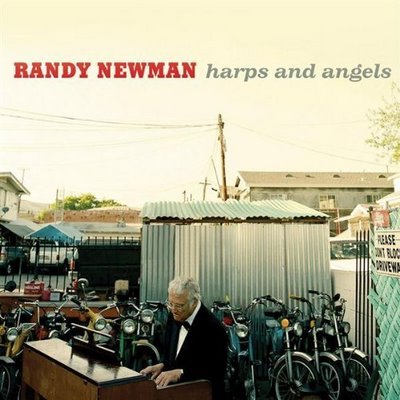
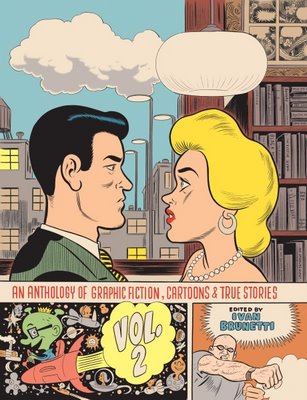
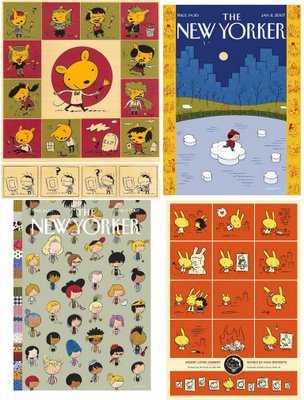
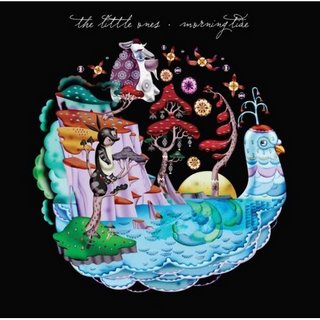

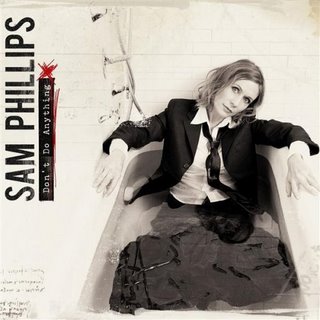
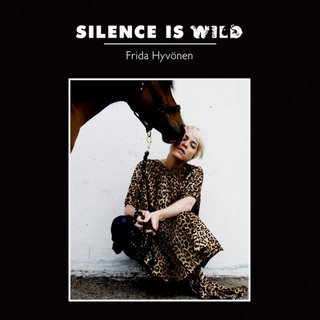








































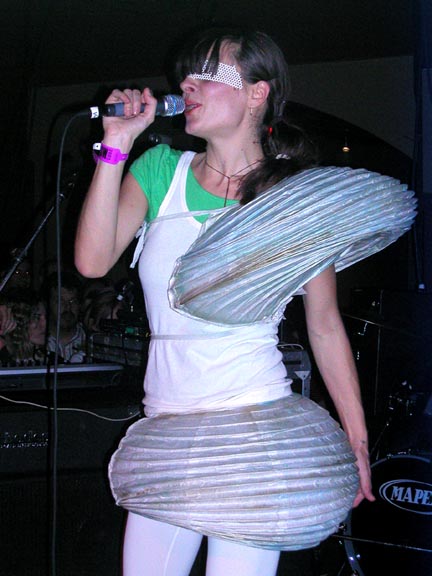
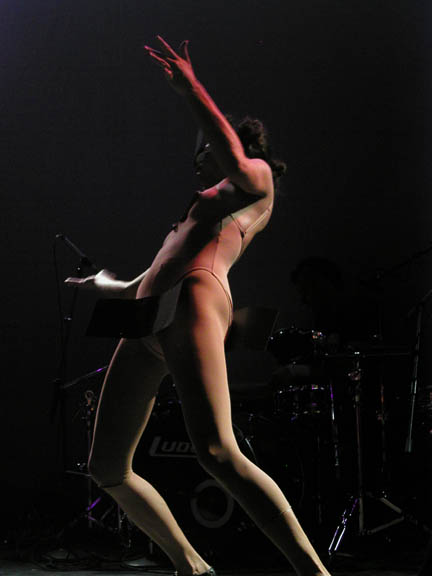
































.jpg)



